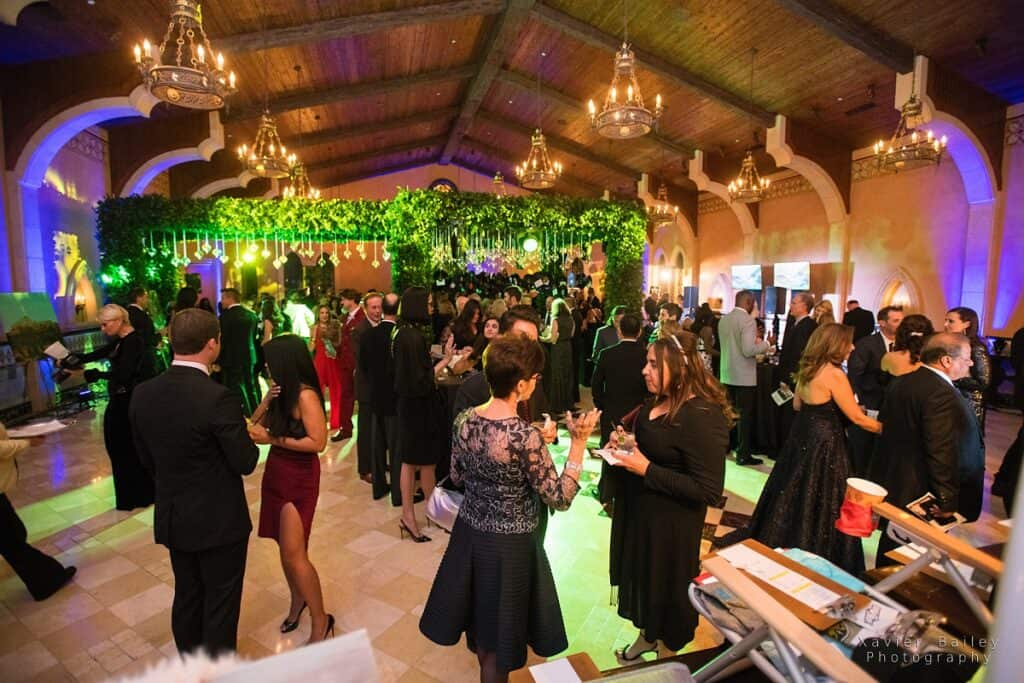Since the beginning of the U.S. COVID-19 outbreak in March, major events around the country have announced the cancellation of events for everyone’s safety. Of course, it’s not just national and city-wide events, like St. Patrick’s Day, that have been put to rest until further notice. Many industry conferences, local concerts, and business gatherings scheduled for the spring and summer have been rescheduled, postponed, temporarily closed or are up in the air.
People nationwide are developing new ways of working, socializing, and connecting while maintaining their health and well-being. If you’re an event host who is hoping to harness this surge of innovation to make the event production go on (albeit in a different form), you may be on the lookout for a rebound strategy. How can you continue to connect your participants in this isolating time? That’s exactly the question we’ll answer below.
Move Your Speakers or Performers Online
Whether you’ve been planning an industry expo, a roundtable discussion, or an intimate concert, your event is designed to connect your audience with the content they’re passionate about. The first step to moving your event online is finding a way to bring your keynote speakers or rockstar performers onto center stage.
Your ultimate goal as event organizers is to create the same authentic experience your audience would’ve had in physical space. With the right virtual events platform, your speakers or performers should still be able to:
- Maintain the audio and visual quality of their talk or performance
- Deliver their content directly to the audience
- Connect with that audience through live feedback or a Q&A
Depending on the nature of your event, live streaming your speakers’ talk or performance may not be the best solution. Individual speakers’ knowledge and home tech setups will vary, as will the way they would prefer to interact with their audience. In consultation with your talent, discuss the following solutions:
Live Streaming
As long as your speaker has a webcam, you can live stream their talk or performance. There are two main methods of live streaming: remote speaker and remote attendee.
Remote speaker
Using a platform like Zoom or GoogleHangouts, have your speaker provide their content directly to their audience. The speaker and audience will be able to see and interact with each other. Benefits include:
- Keynote speakers and other presenters can screen share, displaying a powerpoint or other visual content while speaking
- Speakers and performers can see their audience in real time and gauge their response
- There’s a possibility for natural interactions and conversations to unfold, adding value for event attendees
Remote attendee
In some cases, the technical issues with remote speaker events can outweigh their benefits. In these cases, using a platform like YouTube Live, Facebook Live, or Vimeo to live stream a performance can provide attendees a higher-quality viewing experience.
Depending on the platform you use, you can create free and paid events, as well as give the audience a unique experience. In contrast to a remote speaker event, the speaker will not be able to see or interact with attendees. Nonetheless, benefits include:
- Performers don’t need to interact with attendees directly, personally assuring and troubleshooting the experience
- An advanced setup with multiple cameras and a quality audio input can provide the audience with a high-quality and unique experience
- Attendees can enjoy the event in private, without being visible or audible to dozens of other attendees
- These events can accommodate large audience sizes
Recorded Events with a Live Segment
In some cases, performers with limited technical know-how or who control their performance may prefer to pre-record the bulk of their content. In this format, audiences can ingest a talk or event, and then interact with the speaker afterward in a live Q&A segment (using a remote speaker platform as described above).
On-Demand
Without an experienced tech professional to support your livestreaming event or Q&A, playback errors and connection issues can make live interaction awkward or in some cases impossible. To protect your attendees from the sound of stray sirens, or the cute (if disruptive) appearance of pets, and children, consider pre recording your central presentations.
If your event was planned without a Q&A or interactive period to begin with, an on-demand option won’t sacrifice part of the experience, and can make it more accessible to more attendees. Pre-recording content and making it available on demand may be ideal if:
- Your attendees are in different timezones, and a playback option will enable a larger portion of your audience to attend.
- Your speaker or performer wants to ensure smooth delivery of their content.
- You or your event planning team has time to work with the speaker to record a perfect performance.
Whatever solution you agree upon with your talent, it’s important to have technical support in place to ensure a smooth, streamlined experience for both speakers and attendees. That’s where Vario comes in.
Create Virtual Booths
Whether you’re planning a trade show or an arts festival, your event is about more than speakers and performers—sponsors and exhibitors are a crucial part of the day. To move a day or multi-day event online, you’ll need a solution to make sure your attendees can connect with these vital participants, too.
If you’re used to hosting your event in a huge exhibition hall or outdoor space, you may be surprised to hear that some exhibition events are already moving online. Forbes reports that the trade show industry’s profits have shrunk 7% in recent years as planners have moved to more cost-friendly and less crowded solutions. In recent years, concerts and festivals have also moved online, and even into video games.
With the current public health crisis, new technologies to create virtual events and exhibitions are booming. Such solutions are essential to keeping all event participants well, participating. While your online event may not have the same costs in terms of space rental, technological equipment can be expensive. To retain sponsors and give your attendees a fully-formed experience, consider:
- Using software like 6connex or vFairs to create a virtual exhibit hall. Alternately, partner with an experienced event planner to customize your virtual exhibit space.
- Allow sponsors to include content and links in your event welcome, or to include a free promotion item in your event “gift bag.” Make sure sponsors stay visible (without overwhelming your event’s new online design and visual presence).
- Incorporate sponsors as moderators or volunteers for answering attendee questions. Give them ample opportunities to connect with participants throughout your event.
Provide Opportunities for Interaction
Your event is all about human connection. With the current coronavirus outbreak, attendees may be more eager than ever to take a break from their routine and make the most of their day, networking and interacting with other participants. Therefore, it’s essential to your event’s success that you find a way to connect them directly with each other.
Possible ways to connect participants range from existing social media platforms to specialized solutions. Depending on the size of your event and the leadup time, any of the below solutions might help get attendees talking to one another.
Use Social Media
If you’re hosting an event that’s happening immanently and you don’t have the time or budget for specialized solutions, get attendees talking to each other on social media applications like Facebook and Instagram. This can also help to publicize your event and organization, and even register last-minute attendees. Consider:
- Develop several hashtags for your event, and make sure attendees know them.
- Post frequently (using hashtags) on your event’s social media pages, including in Stories on Facebook and Instagram. Make sure to post in the leadup to and during your event.
- Interact with and retweet participant’s Twitter posts.
Create Breakout Sessions
If networking is an important component of your event, make sure you find ways to connect attendees with each other. Any of the follow solutions can work:
- Use features in Zoom, Google Hangouts, or Slack to create video or text-based breakout sessions so that attendees can speak to each other in smaller groups.
- Create asynchronous breakout sessions—sessions that don’t occur in real time, but allow participants to exchange posts over a few days (or hours) on a messageboard or even in an email chain.
Enable One-on-One interaction
Make sure there’s an easy way for attendees to contact each other throughout your event (without exchanging emails or numbers). This could include a Slack channel for your event, or you could consider a more specialized software solution. Run the World and Hopin are two virtual event platforms that include functions to create cocktail hours, fireside chats, and one-on-one conversations.
Communicate, Communicate, Communicate
Moving your event online may require more than one technological solution, especially as you find ways for attendees to do all of the following:
- Register and pay
- Receive relevant information on software and hardware requirements
- Ask questions and clear up confusion
- Access the event and attend talks or performances
- Network and communicate with each other
Above all, as you move your event online, it’s important to communicate with attendees about each step in the process. Be sure you have designated staff to answer questions, assist with technical troubleshooting, and above all, make sure your virtual event is just as informative and engaging as its real-life counterpart would have been.
Vario | Helping Fix Events Cancelled Due to COVID-19
If you’re overwhelmed at the prospect of moving your event online, let Vario ease your worries. As experienced event planners and industry leaders in mixed-reality events, we’ve long been prepared for the challenge of engaging event participants online. Our unique technological and production solutions can ensure your speakers and participants leave your event with a deeper connection to your organization, and to each other.
Get in touch with Vario today if you want to learn more about event cancellation insurance!







